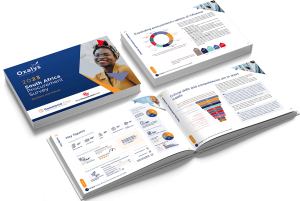By Alejandra Garcia (MCIPS), Vice President: Procurement, Royal DSM
For most organisations, procurement was already undergoing a digital transformation when the COVID-19 pandemic hit us last year. While the accelerated rate of change brought on by the crisis has been brutal, it has confirmed how critical our function is to maintaining a company’s supply chain, and ensuring business continuity and long-term success.
Disruptions will increasingly be part of our reality and we cannot act surprised when unexpected events occur. While there are certainly ‘state-of-the-art’ capabilities and approaches to mitigating a crisis, having some fundamentals in place are key to successfully navigating them during tough times – and help us thrive when times are good. The basic principle is that business is there to meet customer needs and successfully fulfilling these needs requires aligned and engaged procurement teams.
I have captured this approach under the term ‘inclusive’. This is not the standard usage involving diversity (e.g. gender, passport), but a broader meaning where we involve all stakeholders, listen to their voices and welcome what each one brings. In this three-part article series, I will cover the importance of customer insight, engaged teams and crisis management to become an inclusive chief procurement officer (CPO).
Procurement rockstars…really? Really!
I have been fortunate to lead an outstanding global procurement team that has over-delivered on its targets for the past three years in a row. We have done this despite the pandemic and all while boosting employee engagement scores (even with the crisis-induced Zoom marathons!). And, I have had the pleasure of seeing many of them develop into procurement rockstars. Rockstars? Really? I fully get it – procurement may have been seen as a sterile function that mainly focusses on compliance and cost-cutting, so it is hard to see the glamour in it!
So, why do I believe our function has (and needs) rockstars? We are rather uniquely positioned with a broad, systematic and holistic overview of our business activities. With our strengths, we can make significant contributions to our company’s priorities since we work across all functions and have a direct influence on their success. And the starting point to do so is, of course, to focus on the customer!
Begin with the end in mind
Sadly, many procurement organisations too often put the end-customer last (hey, they are just the receiver of a service or product, right?) and, instead, prioritise processes and cost savings. However, at times understandable, this is a limited approach to a truly successful business as ‘you cannot save your way to greatness!’.
Great companies are obsessed with their customers and Amazon is a perfect example. Their first leadership principle is: leaders start with the customer and work backwards. They work vigorously to earn and keep customer trust. Although leaders pay attention to competitors, they obsess over customers.
Whether you are in a business-to-business (B2B), business-to-government (B2G) or business-to-consumer (B2C) business, having a deep knowledge of the end-customer is absolutely critical. Why should they buy from us vs. our competitors? What problem is being solved? What features or services are they willing to pay for? We have to fully understand their needs for service offers, product design, functionality, quality and cost, before we can perform our jobs and collaborate with our supply base. This means ongoing, meaningful exposure to our customers.
Reading market research reports is useful, but nothing beats getting out there in your markets, speaking directly with your customers, and really listening to their stories. I normally connect with our customers at least on a monthly basis, whether through formal or casual ways. Doing this on a regular basis keeps me grounded and helps me to focus my team on the right priorities. This is the thing I miss the most under the current COVID-19 lockdown. Just like every ecosystem has a source of energy, like the sun, I believe for procurement it should be customer needs.
The art of ‘listening to the unsaid’
You might ask, what is the internal stakeholder’s role in this? Should procurement go directly to the customer and bypass internal stakeholders? Fair question and, before you cancel all your meetings, what I truly mean is that internal stakeholders should also be treated as valuable customers. They have the same goal of serving our end-customers and should be seen as a proxy to them.
Here active listening skills are obviously vital. When engaging with internal stakeholders, we need to ask the right questions to separate ‘nice-to-have’ from ‘business-critical’ items, and to identify delighters vs. pain points. It is only by listening for what is not said, and then probing carefully, that we find new solutions to unmet needs.
Back in my time at Kraft (now Mondelez), this made me question the experience our customers had when they could not open cookie packages to give to their crying toddlers and, maybe, prevent a massive meltdown in the subway. Did we really expect our customers to carry scissors around? Was there something I could do through collaboration with our packaging suppliers, research and development, manufacturing, brand development and trade development to make this easier and to make the cookie-eating experience more enjoyable? This resulted in deeply understanding consumer needs and frustrations, and translating those into new packaging specifications and features, introducing easy-open (the famous red strip) and resealable packaging. The end-result? Listening carefully to our customers generated more growth and market share from happy customers (who did not need to carry around scissors!).
Developing trust
Developing trust with internal stakeholders takes time, but it is absolutely worth the investment. We need to demonstrate that we are a genuine business partner who is there to contribute to the company’s strategy and help them reach their department/individual targets. This is much easier to achieve when we can credibly demonstrate that we have the same objective: delight the customer. Do not prescribe before you diagnose.
My preferred strategy is to start the conversation emphasising that “I am not selling any procurement stuff”, I am here to listen to and understand your needs, concerns, ambitions, pain points, bigger questions, challenges and then narrow them down. Concentrate on the WHY, before you delve into the WHAT and HOW. Keep the quote above in mind. Do not use procurement terminology – let them talk about what is important to them. I aim to understand, in detail, what ‘success’ looks like to them.
Then I will come back with some ideas on how procurement can contribute towards solving their identified problem. They need to see us as colleagues with access to knowledge, tools and networks that will make their job easier and contribute towards reaching their goals. Cross-functional team building, and partnerships with an open and trusting environment while focussing on common goals – that is being an inclusive procurement leader!
Looking ahead
Transforming the procurement function and getting it ready for future challenges is obviously something I feel very passionate about. I hope you found one or two insightful and actionable ideas from reading this article and I would love to hear your feedback on how procurement could develop our understanding of customers and bring unique insights to our businesses.As procurement leaders navigate one of the most uncertain periods in a century, they will have to balance the need for cost savings and operational efficiencies as well as ensure that they are not exposed to an unreasonable amount of risk. You are going to need a bold strategy in play.
All opinions expressed here are the views of the author and not necessarily those of the employer.
Read part 2: The inclusive CPO (part 1): love your customers



























